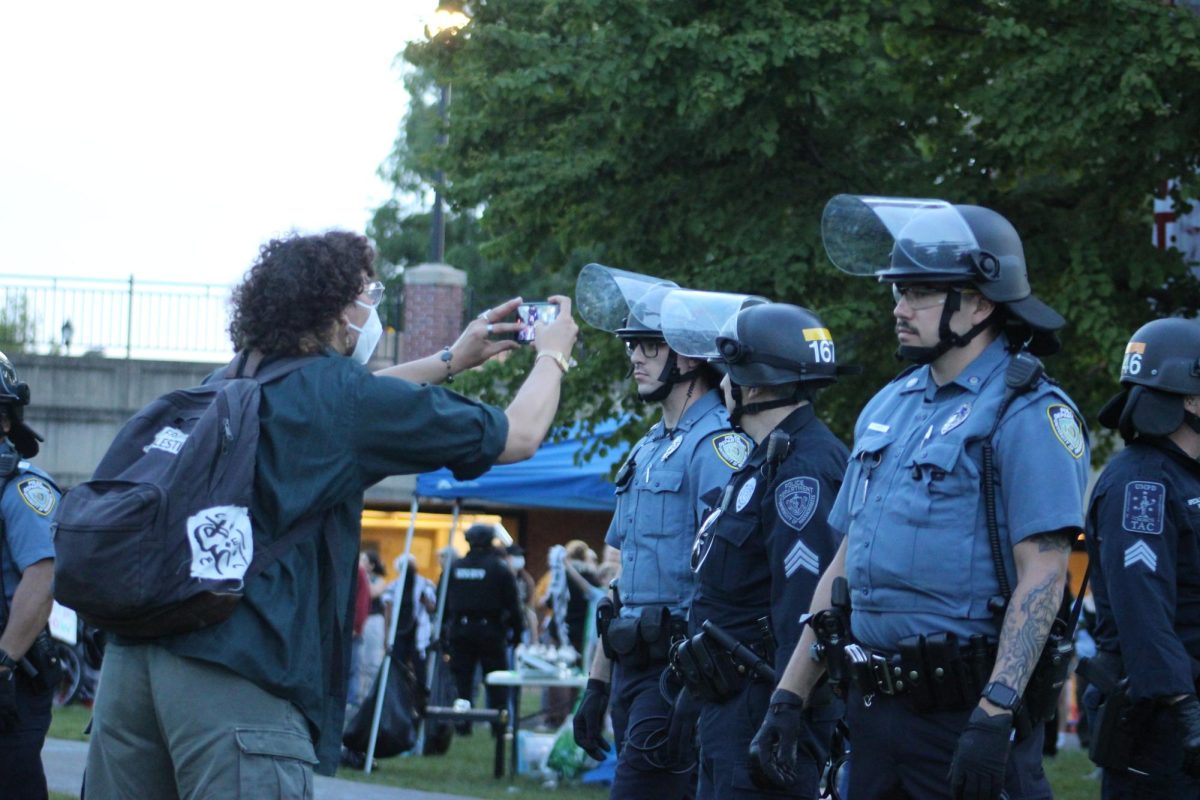I was at Charlie’s the other night and overheard a conversation between two women. The extent of the conversation was basically that chivalry is dead, or more specifically, that nobody had bought these two ladies a drink the entire night. Well, I did what any good Samaritan would do: finished my beer, tipped the bartender, and went out thinking of ways to remedy this problem.
What I came up with is a little thing I call the “ice breaker.” Basically, what one can do while buying a drink for a special someone is state an interesting fact about the staple ingredient, and watch as the conversation starts flowing. At least, this way you can try to sound interesting or intelligent. So, here’s some info to help get you started.
Captain Henry Morgan, of pirate fame, was also a figure in the Second Anglo-Dutch War. Morgan commanded the British buccaneers in the Caribbean. During the war, Morgan captured Camagey, Cuba, and sacked Portobello on the Isthmus of Panama. In 1671, Morgan, with 36 ships and nearly 2,000 buccaneers, defeated a large Spanish force to take the City of Panama. Morgan was sent in chains to England.
However, because of increasing tension with the Netherlands and the outbreak of the Third Dutch War, Morgan was released, knighted and made governor of Jamaica, where he spent his days drinking rum and listening to Bob Marley, maybe.
For Jagermeister, the legend goes that in the seventh century, a young lad named Hubertus was envied for his purity. The jealous Theoderich of Burgundy waged war against Hubertus. By defeating Theoderich, Hubertus proved himself valiant in battle and won the hand of the beautiful princess, Floribana. Together they lived happily with the benefits of wealth, and good fortune until the good princess fell ill.
In his grief, Hubertus became a recluse, often going to the woods to hunt alone. During one of these hunting trips, he encountered a stag with a cross that appeared to float between its antlers. The vision moved him to change his life, and to continue to eat the mushrooms he found. He gave all his material possessions to the poor and founded several monasteries. After his death, Hubertus became the Patron Saint of Hunters. Hence the name Jagermeister, which is German for “hunt master.”
Vodka was originally made for medical purposes. This crude anesthetic and disinfectant was distilled from rye, and it was not until the middle of the fourteenth century that vodka was discovered to have intoxicating characteristics. Families and communities were producing the drink before the end of the 1300’s for the purpose of drinking. From then on it had become customary for vodka to be served at Russian Imperial banquets. All meals were begun with bread and vodka. Vodka is distilled at very high proofs and then filtered through vegetable charcoal: the higher the proof, the less the flavor and clearer the color.
Tequila’s origins can be traced back to the golden days of the Aztecs, who regularly produced and drank pulque, a milky alcoholic beverage made from the agave cactus. The name tequila comes from the town of the same name, which in turn took its moniker from Tuiquila, the name of the Aztec tribe that inhabited the region. When Spain conquered Mexico, the Spanish began to distill the beverage into mezcal, the precursor of Tequila.
Tequila is not considered authentic unless it adheres to Mexican law mandating that it contain at least 51 percent blue agave and be made only in the Mexican towns of Tequila, Arenal, Amatitian, or the region of Los Altos de Jalisco. These four areas alone produce the world’s entire supply of tequila, as well as body shots.
Jasper Newton “Jack” Daniel, one of 13 children, was born in 1850. Hired to work with the Dan Call family at the age of seven, Jack learned everything he could about whiskey making. Call sold his distillery to the teenage Jack, who then registered it in 1866, making it the nation’s oldest registered distillery.
In 1904, Jack entered his Old No. 7 Tennessee sipping whiskey at the World’s Fair. Of the 20 whiskeys from around the world, his was the only one awarded the World’s Fair Gold Medal and honored as the world’s best whiskey. One morning, Jack arrived at work early and tried to open the safe in his office. He couldn’t remember the combination and so he kicked it in anger. The blow broke his toe and infection set in. He eventually died from blood poisoning.
Schnapps come from the alcohol family of cordials and liqueurs. Technically, liqueurs refer to spirits redistilled with fruit juice, plants, and herbs. The foundation of a liqueur is always a spirit, such as whiskey, brandy, rum, or gin. The spirit is then redistilled with different substances, like fruit, flowers, or juices, to impart unique flavors to the finished drink.
In medieval times, cordials and liqueurs were thought of as love potions. This philosophy came from their respective root words; cor, which means “heart” in Latin, and liquefacere, also in Latin means “to melt.”
Ben Feder is a Collegian columnist.
Information taken from the Seagram’s Bartending Guide.






